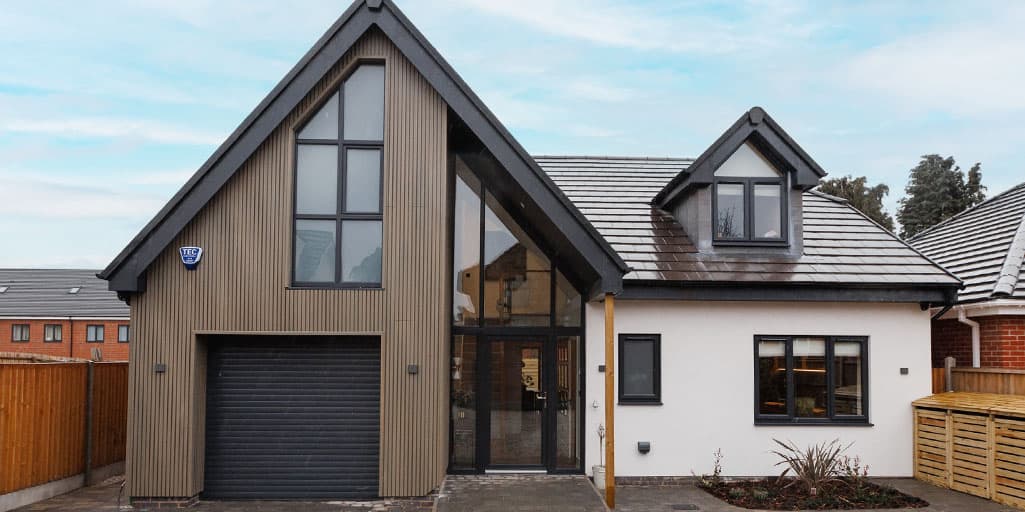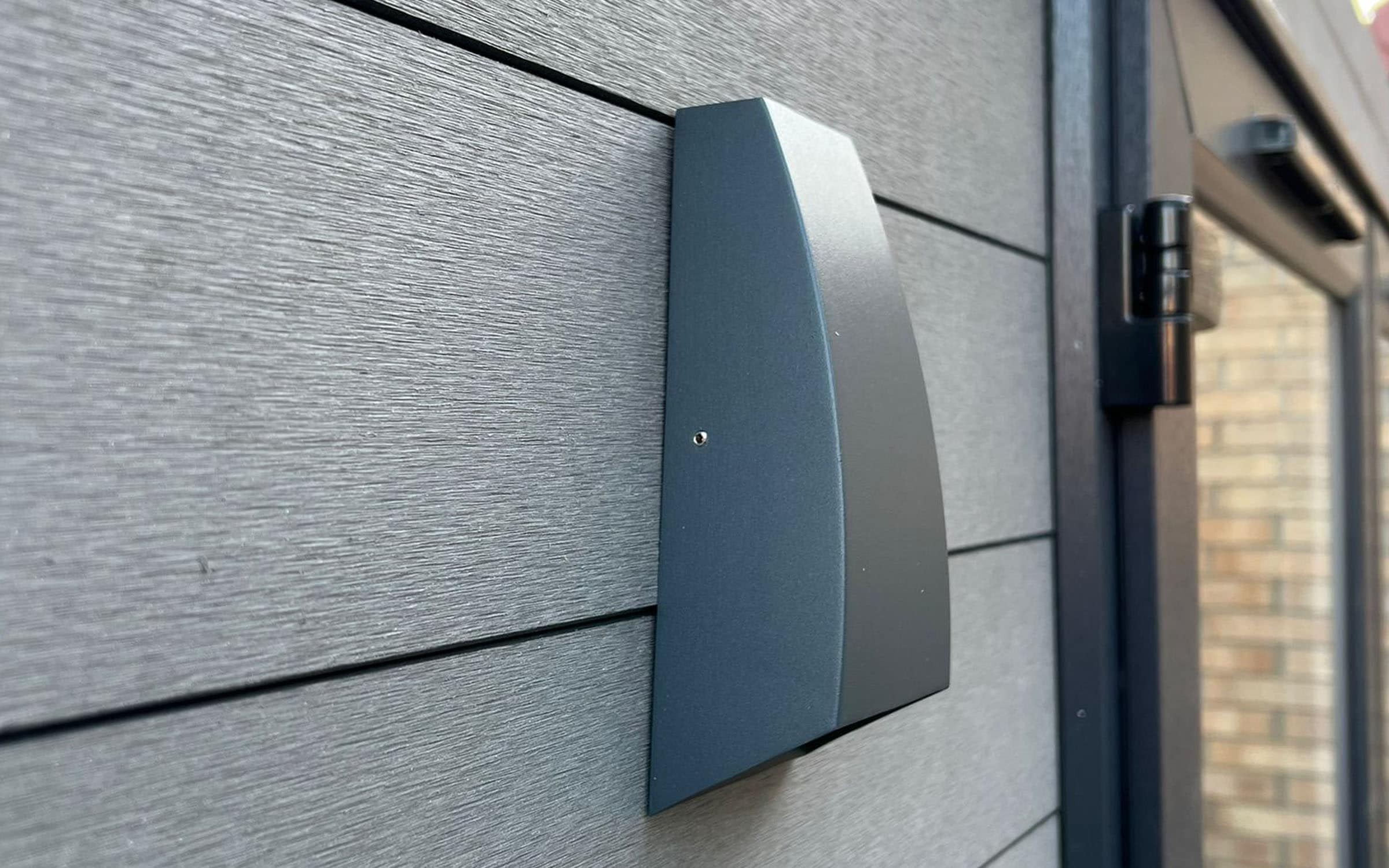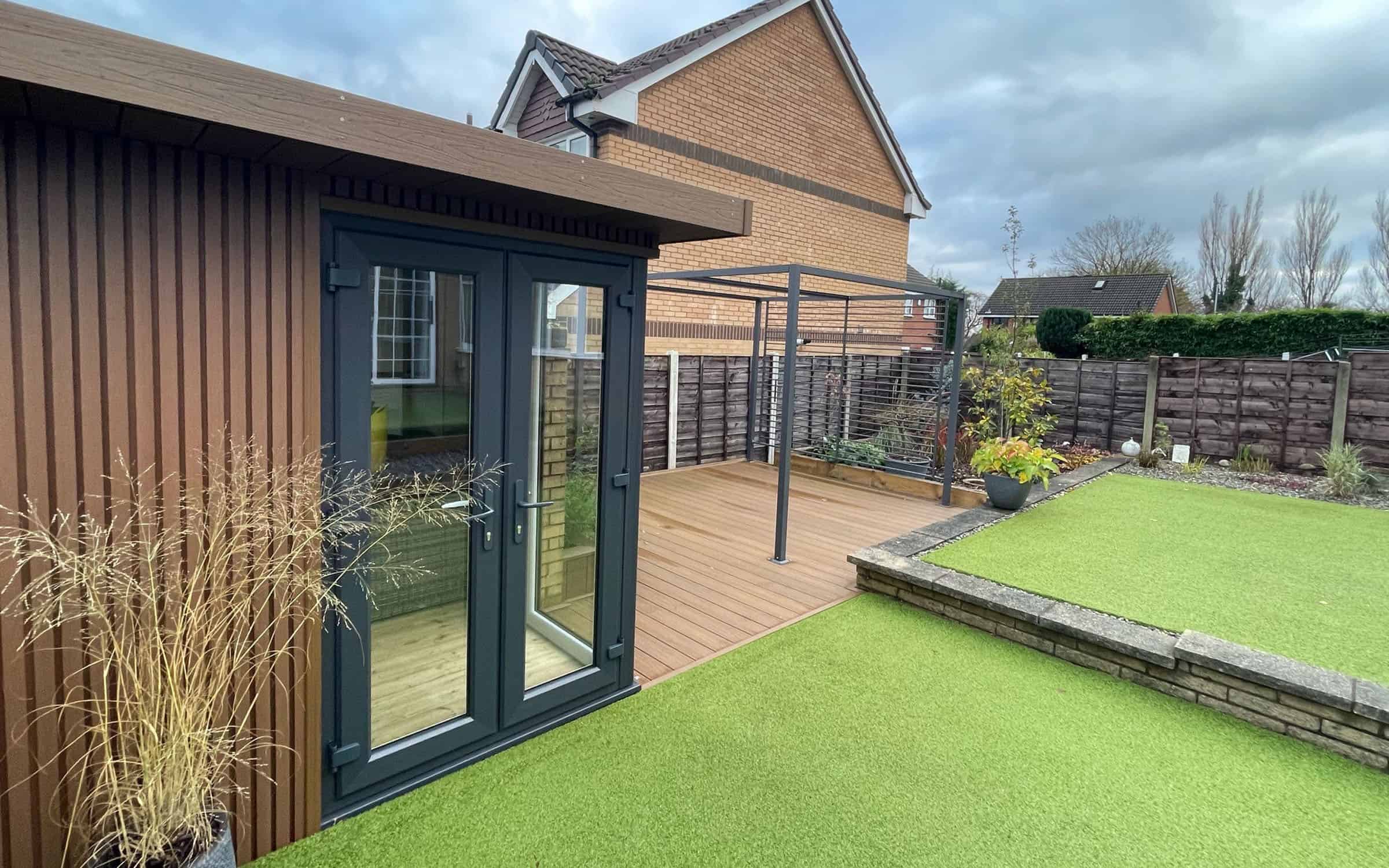Let’s look at exactly what engineered siding is, and how it performs as a cladding solution.
Within the world of composite cladding there are a number of phrases we use to describe the different types of composite cladding. Words like ‘engineered siding’, ‘traditional cladding’, ‘capped cladding’ and ‘WPC’ are used regularly. These terms relate to either the way in which the material itself is structured, any additional treatments the product undergoes, or the various names for the product itself.
Not all engineered wood siding products are made equal, however and the performance you can expect from these products varies depending on their material composition and design.

What Is Engineered Wood Siding?
Engineered siding is weatherboard or cladding that has been made from a composite material. Composite literally means a combination and in this case, the composite cladding is made from a composition of wood fibres and plastic. It is also known as WPC or wood plastic composite, artificial wood cladding, synthetic cladding, composite siding, reconstituted cladding and imitation cladding.
Because of the American reliance on weatherboard as a weatherproof outer skin, a lot of time and energy was invested in finding a more reliable source of weatherproofing than traditional timber cladding. Because timber is prone to warping, cracking and ultimately to rot, a more durable alternative solution was sought.


Are There Different Types Of Engineered Siding?
Engineered wood siding can either be made in a traditional form, like NeoTimber’s Classic cladding range, or capped composite material, like our Deluxe and Slatted boards. Traditional composite cladding is plastic and wood mixed and moulded to form the boards. This product benefits from of longevity and low maintenance provided by the plastic element of the product. Capped composite cladding is a second generation material that goes through a secondary process whereby cooled traditional cladding boards are fed through a sheath of plastic polymers, coating it with an extra layer of protection against all moisture absorption and fading.
In a climate as unpredictable as the United Kingdom’s, a cladding board which resists both moisture and the effects of UV rays means the “capped” engineered siding is much better equipped to stand years of unpredictable weather and ultimately offers you: the homeowner, specifier, installer or stockists that additional peace of mind.
Need Further Support or Advice?
If you’ve still got questions that have not been answered here, or you would like additional advice,
support or assistance then please give one of our friendly experts a call and we’ll be happy to help.
Just give us a call on 01530 382 180.
